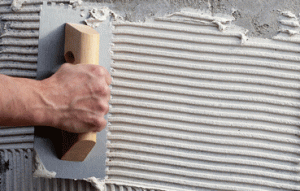Dyshidrotic Eczema

Working with cement: People who frequently work with cement have a higher risk of developing dyshidrotic eczema.
Dyshidrotic eczema: Who gets and causes
Who gets dyshidrotic eczema?
The people most likely to get dyshidrotic eczema (DE) are adults aged 20 to 40, who often have one or more of the following:
Certain medical condition: You have a higher risk of developing DE if you have any of the following:
- Atopic dermatitis (eczema) or blood relatives who have eczema
- Contact dermatitis, especially an allergy to nickel
- Dyshidrotic eczema in your family
- Hay fever
Sweaty or moist hands: Some people have flares every spring or summer when the temperature rises.
Wet hands throughout the day or work with certain substances: DE is more common in people who:
- Immerse their hands in water frequently during the day, such as healthcare workers, hair stylists, and florists
- Work with cement
- Work with chromium, cobalt, or nickel
Patients receiving immunoglobulin therapy may get DE
If you are receiving intravenous (IV) immunoglobulin and develop blisters on your hands or feet after an infusion, be sure to tell your doctor. This is likely DE. A few patients develop this eczema after receiving immunoglobulin therapy.
The eczema can worsen with each infusion, so early diagnosis is important. With treatment, most cases of DE due to this therapy are treated successfully. This will allow you to continue receiving immunoglobulin therapy.
Common triggers
Some people find that their DE flares at certain times, such as periods of:
- Intense stress or worrying
- Warm weather, when heat and humidity rise
- Wet work (having wet hands frequently throughout the day)
What causes dyshidrotic eczema?
While researchers have discovered that some people are more likely to get DE, the cause is still unknown.
The cause may be a complex reaction that happens in the immune system.
If you think that you might have DE, an accurate diagnosis and proper treatment are important.
References:
Gerstenblith MR, Antony AK, et al. “Pompholyx and eczematous reactions associated with intravenous immunoglobulin therapy.” J Am Acad Dermatol. 2012;66:312-6.
Habif TP, Campbell JL, et al. “Pompholyx” (card #16). Dermatology DDxDeck. Mosby 2006.
Kotan D, Erdem T, et al. “Dyshidrotic eczema associated with the use of IVIg.” BMJ Case Rep. 2013 Feb 15.
Lee KC, Ladizinski B. “Dyshidrotic eczema following intravenous immunoglobulin treatment.” CMAJ. 2013;185(11):E530.
Schnoop C, Remling R, et. al. “Topical tacrolimus (FK506) and mometasone furoate in treatment of dyshidrotic palmar eczema: A randomized, observer-blinded trial.” J Am Acad Dermatol.2002; 46(1):73-7.
© 2024 American Academy of Dermatology. All rights reserved. Reproduction or republication strictly prohibited without prior written permission. Use of these materials is subject to the legal notice and terms of use located at https://www.aad.org/about/legal
